7 Best Golf Balls for High Handicappers (2023)

Finding the best golf balls for high handicappers can help your swing and game with control and precision. We’re going to take a look from the traditional white golf ball, affordable golf balls, and premium golf balls. But don’t worry, we’re here to help the high handicap golfer in your life. In this article, I ranked and reviewed the 7 best golf balls for high handicappers, so that you can pick the best one for you.
What are the Best Golf Balls for High Handicappers?
Let’s take a look at the best golf balls for high handicappers.
1. Bridgestone e12 Contact
Best Overall Golf Ball for High Handicap Golfers
Bridgestone e12 Contact
Cons:
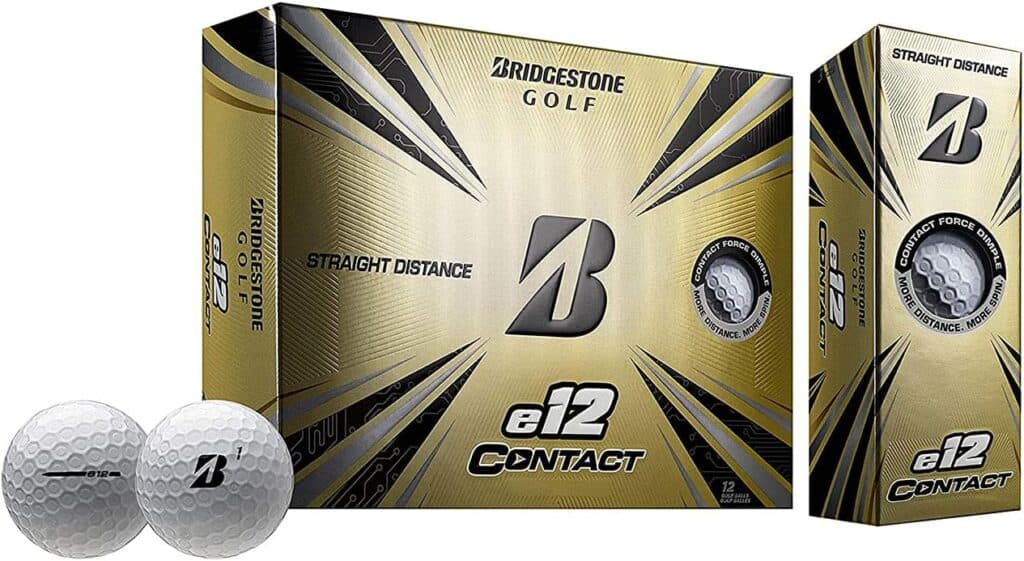
Key Features:
- Price: $25.50
- Colors: White, Green, Red, Yellow
- Construction: Three piece
Overview.
Bridgestone’s e12 CONTACT golf ball is a real game-changer.
With its innovative design, it reduces sidespin, making it perfect for those pesky hooks and slices.
Plus, its low compression rating works wonders for slower swingers.
The Contact Force Dimple is a standout feature, giving me more control and spin around the greens.
Off the tee, it’s impressively long and straight, yet feels soft.
2. Titleist Trufeel Golf Ball
Most Forgiving Golf Ball for High Handicappers
Titleist Trufeel
Cons:
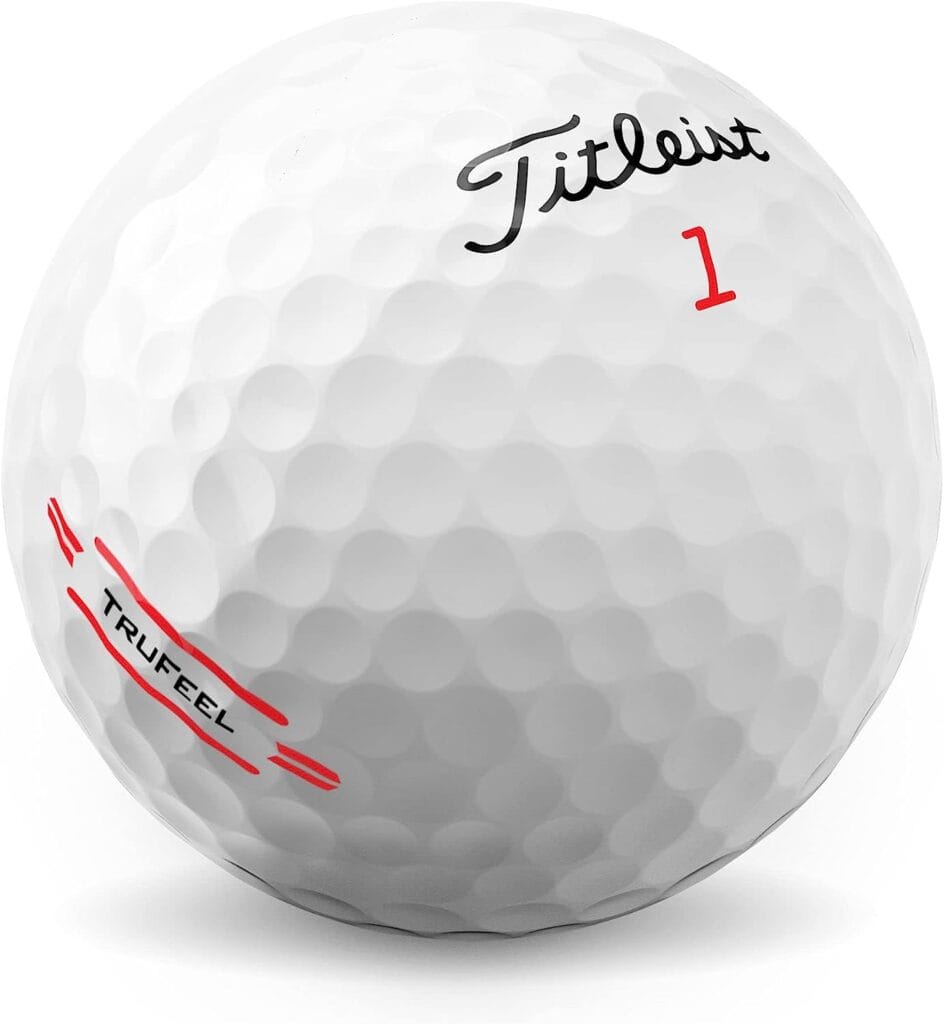
Key Features:
- Price: $24.97
- Colors: White, Matte Red, Yellow
- Construction: Two piece
Overview.
The Titleist TruFeel is a great golf ball for high handicappers who want a soft feel and distance.
The TruFlex cover and TruTouch core provide a soft feel off the tee and around the greens, while the lower spinning nature of the ball can help you gain distance and straighten out your shots.
If you’re looking for a high-performance golf ball that won’t hurt your ears, the Titleist TruFeel is a great option.
3. Callaway Supersoft MAX
Best Golf Ball for High Handicap with Slow Swing Speeds
Callaway Supersoft MAX
Cons:
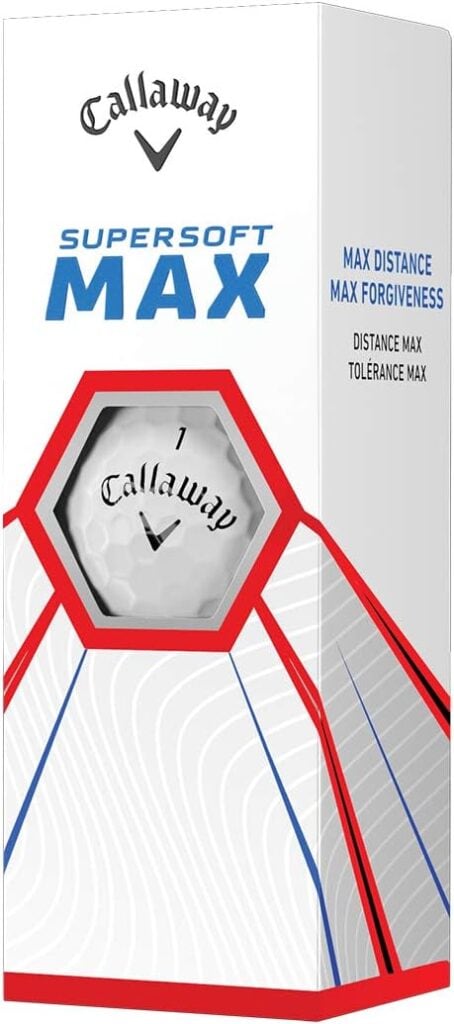
Key Features:
- Price: $24.99
- Colors: White, Yellow
- Construction: Two piece
Overview.
The Callaway Supersoft MAX is a great golf ball for high handicappers who want more distance and forgiveness.
Its unique slightly larger size helps create faster ball speeds and higher launches with low spin, perfect for my game.
I love that the oversized design increases consistency and launch angles, leading to longer and straighter shots.
And the sharp black alignment line on each ball makes putting a breeze, boosting my confidence on the greens.
4. Wilson Staff Duo Soft Golf Ball
Best Golf Balls for Mid to High Handicappers
Wilson Staff Duo Soft
Cons:
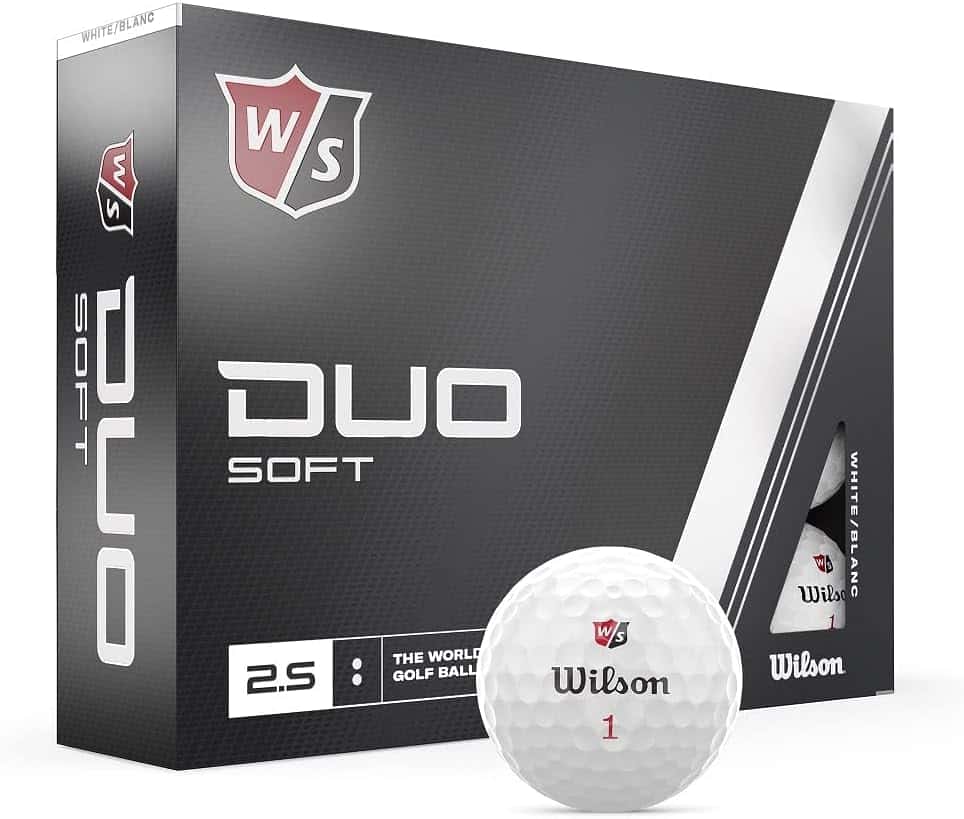
Key Features:
- Price: $22.97
- Colors: White, Green, Orange, Pink, Red, Yellow
- Construction: Two piece
Overview.
The Wilson Staff Duo Soft Golf Balls are a fantastic deal for golfers who want top-notch quality.
You get 12 high-performing balls that offer remarkable distance, low spin, and excellent control.
The ultra-soft core feels great at impact, and the low compression reduces backspin for better accuracy.
I love how the soft cover adds greenside spin, making it easier to handle tricky lies. Plus, the durable ionomer blend keeps the ball in great shape round after round.
The unique dimple patterns improve aerodynamics, giving you greater accuracy and a straighter ball flight.
Each ball is carefully designed and tested for optimal performance and consistency.
These golf balls are a premium choice, providing an impressive feel and boosting your gameplay.
5. Noodle (TaylorMade) Long and Soft
Best Golf Balls for Beginners
Noodle
Cons:
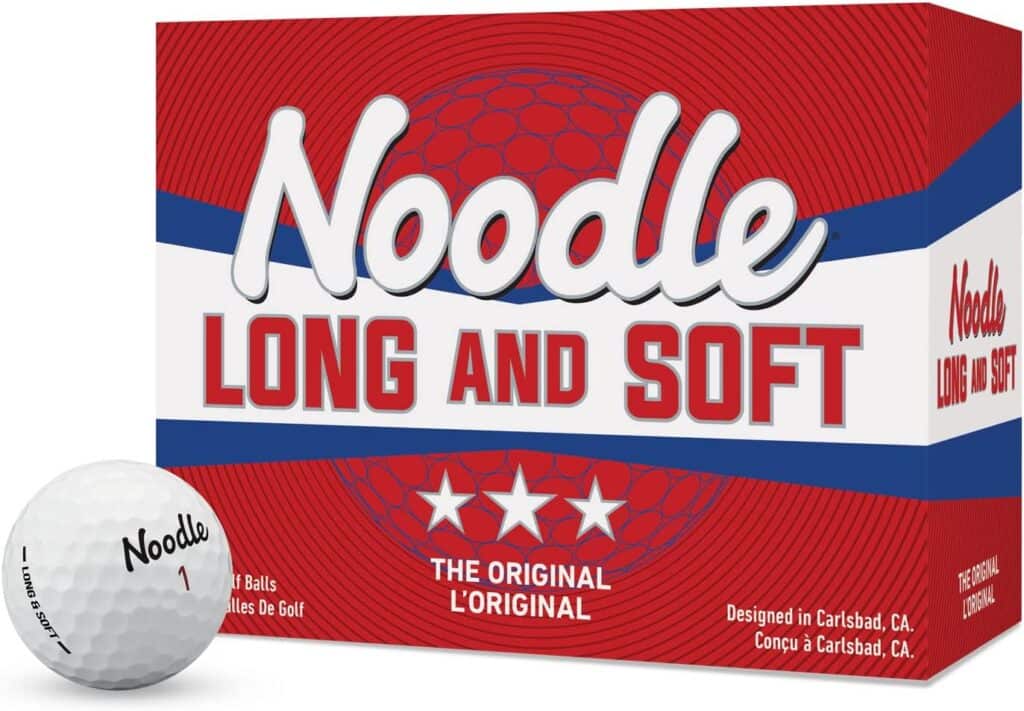
Key Features:
- Price: $24.97
- Colors: White
- Construction: Two piece
Overview.
The infamous Noodle golf ball, now under TaylorMade, is a true classic and a steal for its price.
We’ve all played the round of our lives with one of these balls.
It might not suit fast swingers, but for those of us with a slower swing speed, hitting the center produces effortless distance.
The 342 Aerodynamic Dimple Pattern adds to the experience, keeping the Noodles flying down the fairway and providing great feel for short game shots.
6. Srixon Distance Golf Ball
Best Distance Golf Balls for High Handicappers
Srixon Distance Golf Ball
Cons:

Key Features:
- Price: $24.35
- Colors: White
- Construction: Two piece
Overview.
The Srixon Distance golf ball is a great option for high handicappers who are looking for a long-distance ball that is also durable.
The soft compression core helps to deliver distance through more velocity and higher launch, and the reduced dimple count helps the ball penetrate the air in windy conditions.
I was impressed with the distance I got with this ball, and I also found that it was durable and held up well to my mis-hits.
One downside of the Srixon Distance golf ball is that it does not have as much feel as some other premium models.
However, I was still able to get a good sense of where the ball was going, and I didn’t feel like I was hitting a rock.
7. Titleist Velocity Golf Balls
Best Golf Ball for 15-20 Handicap
Titleist Velocity Golf Balls
Cons:
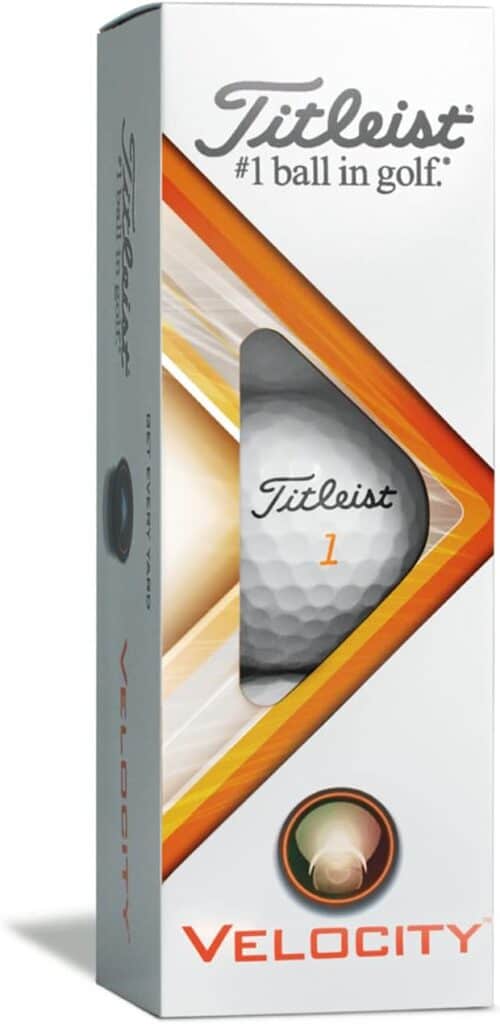
Key Features:
- Price: $29.97
- Colors: White, Matte Blue, Matte Green, Matte Orange
- Construction: Two piece
Overview.
The Titleist Velocity golf ball is a great option for beginners and high handicappers who are looking for a long-distance ball that is also affordable.
The compression rating of 84 makes it a good fit for players with quicker swing speeds, and the two-piece construction helps to maximize distance.
One downside of the Velocity golf ball is that it does not have as much spin as some other premium models.
This can make it more difficult to control the ball on approach shots and in windy conditions.
However, if you’re looking for a ball that will help you hit the ball farther off the tee, the Velocity is a great option.
Factors to Consider when Buying Golf Balls
High handicappers, who are golfers with higher scores and less experience, should consider several factors when buying golf balls to help improve their game and get the most out of their equipment. Here are some important factors to consider:
- Softness and Compression: For high handicappers, softer golf balls with lower compression can be beneficial. They offer more forgiveness and control, especially for slower swing speeds, resulting in longer distance and better feel.
- Distance vs. Control: High handicappers may want to prioritize distance over extreme spin and control. Distance balls are designed to travel farther, which can be helpful for golfers still working on their swing mechanics.
- Durable Construction: Since high handicappers tend to hit more wayward shots, durable golf balls can save money and last longer. Look for balls with strong outer covers, such as ionomer or urethane blends.
- Pricing: Golf balls can vary significantly in price. Consider your budget and how much you’re willing to spend on golf balls, especially if you tend to lose them frequently.
- Spin Rates: While high handicappers may not benefit from excessive spin, having some level of spin is still essential for controlling the ball around the greens. Seek golf balls with mid-level spin rates.
Additional factors:
- Feel and Feedback: Golfers at all levels should find a ball that provides good feedback upon impact. A ball with a good feel can give high handicappers more confidence in their shots.
- Visibility: High handicappers may find it helpful to use golf balls with bright colors or high-visibility patterns. This can make it easier to track the ball in flight and find it on the course.
- Compression and Swing Speed: Match the compression of the ball to your swing speed. Generally, slower swing speeds benefit from lower-compression balls, while faster swing speeds benefit from higher-compression balls.
- Personal Preference: Finally, personal preference plays a role in golf ball selection. Trying out different balls and finding one that suits your playing style and preferences can make a significant difference in your overall game.
Keep in mind that as your game improves and your handicap decreases, you may want to reassess your golf ball choice. But for high handicappers, focusing on distance, forgiveness, and affordability will generally yield positive results.
Two-piece vs Three-piece Golf Balls
Two-piece golf balls:
These are the most basic type of golf ball. They consist of a solid core and a thin cover. Two-piece golf balls are designed to be long and straight, and they are often the best choice for golfers with high swing speeds. However, they can be less forgiving on off-center hits, which can make them more difficult to control for high handicappers.
Three-piece golf balls:
These have a more complex construction than two-piece golf balls. They consist of a core, a mantle, and a cover. The mantle is a layer of material that is sandwiched between the core and the cover. Three-piece golf balls are designed to offer a combination of distance, forgiveness, and feel. They are often the best choice for golfers with moderate swing speeds. The mantle layer in a three-piece golf ball helps to absorb impact, which makes them more forgiving on off-center hits. This can be beneficial for high handicappers who tend to mis-hit the ball more often.
Here are some of the key differences between two-piece and three-piece golf balls that high handicappers should consider:
- Distance: Two-piece golf balls tend to be longer off the tee than three-piece golf balls. This is because the solid core in a two-piece ball is more efficient at transferring energy from the clubface to the ball. However, three-piece golf balls can offer more distance on iron shots, as the mantle layer helps to keep the ball’s shape and prevent it from deforming on impact.
- Forgiveness: Three-piece golf balls are more forgiving on off-center hits than two-piece golf balls. This is because the mantle layer helps to absorb impact and prevent the ball from losing energy. This can be beneficial for high handicappers who tend to mis-hit the ball more often.
- Feel: Two-piece golf balls tend to have a harder feel than three-piece golf balls. This is because the solid core in a two-piece ball does not transmit as much vibration to the golfer’s hands. Three-piece golf balls, on the other hand, have a softer feel because the mantle layer absorbs some of the vibration. This can be beneficial for high handicappers who want to be able to feel the ball better on impact.
Low Spin vs High Spin Golf Balls
Low-spin golf balls: These golf balls are designed to produce less spin on impact. This can help the ball to travel farther and straighter, which can be beneficial for high handicappers who tend to slice or hook the ball. Low-spin golf balls often have a harder cover, which helps to reduce the amount of spin that is generated on impact.
High-spin golf balls: These golf balls are designed to produce more spin on impact. This can help the ball to stay in the air longer and curve more, which can be beneficial for high handicappers who want to be able to control their shots more precisely. High-spin golf balls often have a softer cover, which helps to increase the amount of spin that is generated on impact.
Here are some of the key differences between low-spin and high-spin golf balls that high handicappers should consider:
- Distance: Low-spin golf balls tend to travel farther than high-spin golf balls. This is because they have less drag, which allows them to cut through the air more easily.
- Accuracy: High-spin golf balls tend to be more accurate than low-spin golf balls. This is because they can be controlled more precisely, which can help you to hit the ball where you want it to go.
- Feel: Low-spin golf balls tend to have a harder feel than high-spin golf balls. This is because the harder cover does not absorb as much vibration on impact. High-spin golf balls, on the other hand, have a softer feel because the softer cover absorbs more vibration.
Low Compression vs High Compression Golf Ball
Compression: Compression is a measure of how much a golf ball compresses when it is hit. Golf balls with a low compression rating are softer and more pliable, while golf balls with a high compression rating are harder and less pliable.
Low-compression golf balls: These golf balls are designed to provide more feel and feedback to the golfer. They are also more forgiving on off-center hits, which can be beneficial for high handicappers who tend to mis-hit the ball more often. Low-compression golf balls are often recommended for golfers with slower swing speeds.
High-compression golf balls: These golf balls are designed to provide more distance. They are also more stable in the air, which can be beneficial for golfers who hit the ball with a lot of spin. High-compression golf balls are often recommended for golfers with faster swing speeds.
Here are some of the key differences between low-compression and high-compression golf balls that high handicappers should consider:
- Feel: Low-compression golf balls tend to have a softer feel than high-compression golf balls. This is because the softer core compresses more on impact, which allows the golfer to feel the ball better. High-compression golf balls, on the other hand, have a harder feel because the harder core does not compress as much on impact.
- Forgiveness: Low-compression golf balls tend to be more forgiving on off-center hits than high-compression golf balls. This is because the softer core absorbs more impact, which helps to prevent the ball from losing energy. High-compression golf balls, on the other hand, are less forgiving on off-center hits because the harder core does not absorb as much impact.
- Distance: Low-compression golf balls tend to travel shorter distances than high-compression golf balls. This is because the softer core is less efficient at transferring energy from the clubface to the ball. High-compression golf balls, on the other hand, travel longer distances because the harder core is more efficient at transferring energy from the clubface to the ball.
FAQ:
Can high handicappers use Pro V1?
Yes, high handicappers can use Pro V1 golf balls. There is no rule that says that only low handicappers can use these balls. In fact, there are many high handicappers who use Pro V1s and find that they help them improve their game.
But high handicappers may not benefit as much from using the premium golf ball Pro V1, which is designed for low handicappers with better control and higher swing speeds. Golf balls with lower compression and designed for forgiveness may be more suitable for high handicappers. However, personal preference plays a role, and testing different balls can help find the best fit. Confidence and consistency are key in choosing the right golf ball.
If you are a high handicapper and you are considering using Pro V1s, I recommend that you try them out before you buy them. See if they help you improve your game. If they do, then they are worth the investment. But if they don’t, then you may want to consider other options.
What is high handicap golf?
A high handicap golf is a term used to describe a golfer who consistently scores above a certain number of strokes over par. The exact number of strokes that defines a high handicap varies depending on the source, but it is generally considered to be above 20.
High handicap golfers are often beginners or recreational players who are still learning the game. They may have inconsistent swings or poor technique, which can lead to inconsistent results. However, even experienced golfers can have high handicaps if they are not playing regularly or if they are not able to consistently hit the ball well.
There are a number of factors that can contribute to a high handicap, including:
- Inconsistent swing: A consistent swing is essential for hitting the ball accurately and consistently. If your swing is inconsistent, you will likely have a high handicap.
- Poor technique: Poor technique can also lead to a high handicap. If you are not using the correct grip, stance, or alignment, you will likely have difficulty hitting the ball well.
- Lack of practice: If you do not practice regularly, you will likely have a high handicap. The more you practice, the better you will become at hitting the ball.
- Injury: If you are injured, you may have a high handicap. Even a minor injury can affect your swing and make it difficult to hit the ball well.
What does a soft golf ball mean?
A soft golf ball is a type of golf ball that has a lower compression rating than a hard golf ball. This means that the core of the ball is softer and more pliable. Soft golf balls are designed to provide more feel and feedback to the golfer, and they can also be more forgiving on off-center hits.
The compression rating of a golf ball is measured on a scale of 1 to 100, with 1 being the softest and 100 being the hardest. Most soft golf balls have a compression rating of 60 or lower.
There are a number of benefits to using a soft golf ball, including:
- More feel: Soft golf balls provide more feel and feedback to the golfer. This can help you to better understand how you are hitting the ball and make adjustments to your swing accordingly.
- More forgiveness: Soft golf balls are more forgiving on off-center hits. This means that if you don’t hit the ball perfectly, you are less likely to lose distance or accuracy.
- More spin: Soft golf balls can also generate more spin than hard golf balls. This can be helpful for shots that require a lot of control, such as chips and putts.
Wrap-Up.
There are many great golf balls on the market for high handicappers. The best ball for you will depend on your individual swing speed, preferences, and budget. However, the balls listed in this article are all great options that offer a combination of distance, forgiveness, and feel.
If you’re looking for a soft feel and long, straight shots, the Bridgestone e12 CONTACT is a great choice. If you’re looking for more distance and forgiveness, the Callaway Supersoft MAX is a good option. And if you’re looking for a ball that offers a good balance of all three qualities, the Titleist TruFeel is a great option.
No matter which ball you choose, make sure to test it out before you buy it to make sure it’s the right fit for you. And remember, the most important thing is to have fun and enjoy the game!